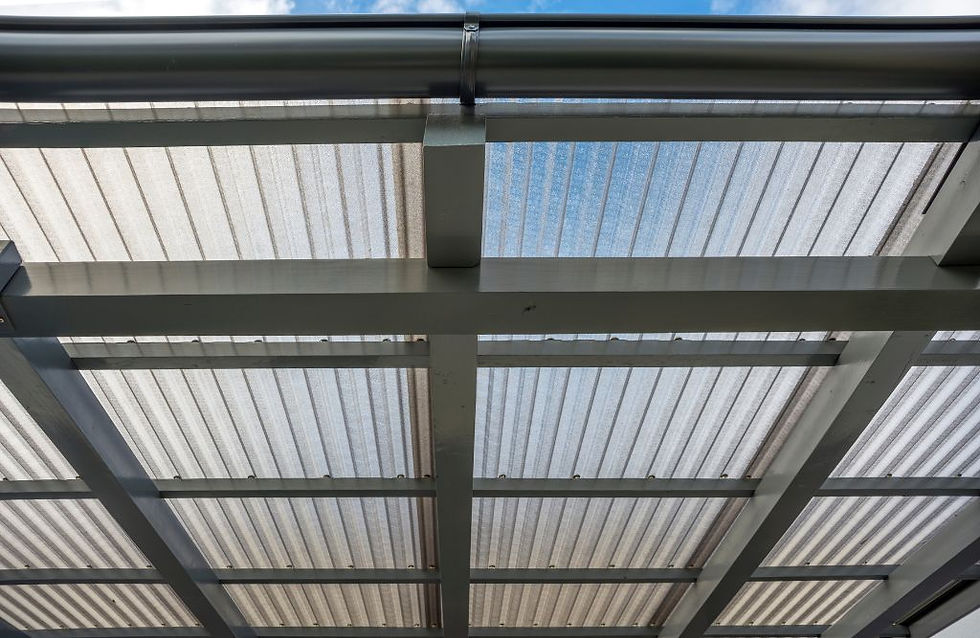The Progressive World of Formwork Construction: Innovations and Future Trends
- Kiara Waylen
- Oct 9, 2023
- 3 min read
Updated: Dec 15, 2023
In the ever-evolving landscape of architecture and construction, have you ever paused to ponder the past, examine the present, and envision the future of this integral industry? One area that has incessantly sparked ingenuity, necessitating a closer look, is formwork construction. But what exactly is formwork, the unsung hero of construction? Are we aware of its influential role, profound impact, and even future potential?

Formwork refers to the mold into which concrete is poured, forming the structural shape as the concrete hardens. These temporary structures have seen considerable innovation over the years, with materials and methods advancing for cost efficiency, speed, and sustainability.
So, where will all these advancements in formwork methodologies take us? Our journey unearths the rich history, underscores the current context, and peels back the curtain on the promising innovations and future trends in formwork construction.
A Brief Backstory: The Evolution of Formwork
The history of formwork is a testament to human ingenuity, showcasing the transformation from rudimentary wooden structures to advanced versions made of steel, aluminum, and even plastics. But why did this evolution occur, and how has it influenced today's practices?
The surge for faster, more economical methods prompted advancements in formwork. While wooden formwork reigned supreme for centuries, they revealed limitations in versatility and durability, leading to the exploration of metal and plastic variants. The centuries-long journey of formwork encapsulates humanity's relentless quest to build better, and this spirit shows no signs of receding.
Formwork Today: Purpose and Prominence
Fast forward to modern-day construction, what role does formwork play? Is it as inconspicuous as it appears, hiding in plain sight?
Formwork is a fundamental part of structural construction, its importance belied by its often temporary nature. Beyond supporting the pouring of concrete, formwork ensures the maintenance of structural integrity, increasing durability and longevity. Formwork today has become an essential part of the transformational skyline of urban landscapes.
Inspired Innovations in Formwork
What innovative materials and executions are shaping the current formwork landscape? Where do we see the signs of forward-thinking designs?
Innovations today encompass lightweight plastic formworks, reusable fiberglass versions, and inflatable fabric formworks. Affording flexibility, ease of use, and recyclability, these innovations prioritize sustainability alongside functionality. The rise of robots to fasten formwork systemically not only accelerates the pace of construction but also enhances precision.
The Downsides: Challenges in Formwork Construction
However, just like any other construction process, formwork also faces its share of challenges. What are some areas of concern, and could future innovations address them?
The hurdles include high costs and labor demands, environmental impact, safety concerns, and the need for skilled labor. Addressing these challenges forms the basis of future innovations and is the keystone to progressing towards more sustainable and efficient formwork processes.
Future Forward: Predictions for Formwork Construction
What does the future hold for formwork? How might technology, sustainability, and societal needs shape the future trends in formwork construction?
The future could witness the rise of bio-based, recyclable formworks, drones for accurate fitting, and even 3D printing technology, which could revolutionize formwork construction. Sustainability will continue to steer innovations, and the intersection of technology and evolving societal needs guarantees a vibrant, transformative future for formwork construction.
Conclusion
Reflecting on our formwork exploration, it becomes crystal clear just how integral this under-the-radar industry is. From its contributions to our current architectural landscape to its role in shaping our future, formwork construction consistently evolves, striving to overcome challenges and embrace new sustainable technologies.
As we scan the horizon, it's exhilarating to consider the impact forthcoming innovations would have on our lives. From bio-based formworks to robotic automation, the potential transformations are myriad. And amidst all these monumental shifts and progressions, it's heartening to recognize that the spirit of ingenuity and advancement that underpinned the humble beginnings of formwork remains fervently alive. It is this spirit, propelled by modern needs and opportunities, that ensures a vibrant, transformative future for formwork construction. As change becomes our constant companion and technology our trusted ally, we observe and anticipate with bated breath the continuing, awe-inspiring odyssey of formwork construction.








Comments